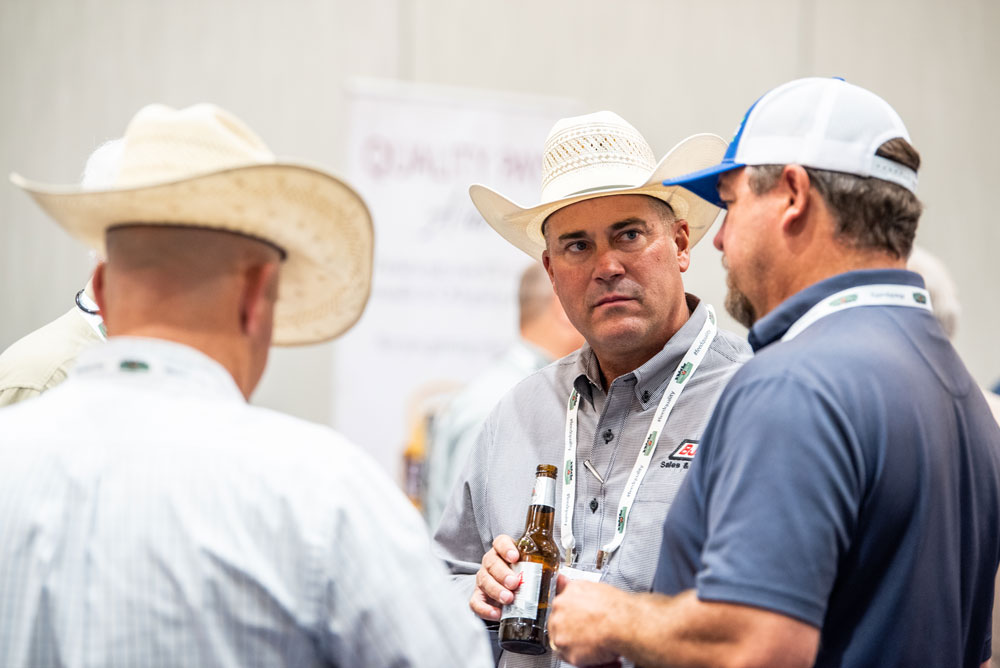
Rising to the challenge of ideal
What consumers demand, ranchers provide
by Morgan Marley
September 30, 2019
Beef cow herds change with each year, from breeding to calving and replacements kept. They adapt based on management decisions. So when the first National Beef Quality Audit found a quality shortfall, producers knew they could shift directions. It just took time for market signals to incentivize it.
At the recent 2019 Feeding Quality Forum in Amarillo, Certified Angus Beef ® (CAB®) brand president John Stika spoke to the changes in “ideal” since 1991.
“At the time, we’d have been lucky to be producing 2% Prime, and they said we needed to be probably at 7%,” he recalled.
A fantasy then but 28 years on, the fed-cattle harvest mix is 8.8% Prime and 72% Choice. Nobody predicted it then, and there seemed no response for a couple of cattle cycles. But the seeds of change were planted; progress was no accident.
“We didn’t get there by randomness,” Stika said. “We got there by being intentional in responding to consumer demands and the market signals that were sent back to the cattle feeder and the cow-calf producer.”
A third of all Angus-influenced cattle meet now meet the 10 CAB science-based specifications, a “paradigm shift” to double the rate of a dozen years ago, all going back to producers’ efforts.
The market incentivized that. Even through a “Great Recession” and widespread drought, starting roughly 10 years ago and largely resolved by 2014, the brand saw record consumer demand at record prices.
“We learned that it’s not just price that drives consumer purchasing decisions, it’s price in relation to value,” Stika said. “And that value is defined by the taste and the experience that our beef products provide the consumer.”

It’s easy to forget the beef end of the supply chain in the day-to-day of cow country, he noted. But that’s the end that drives price differentiation and change in beef-cow herds.
“The most sustainable source of revenue comes from the consumer,” Stika said. Efforts to keep genetics and cattle management focused on that demand require discerning the target.
“Ideal changes as consumer preferences change,” Stika said. “And so while there isn’t necessarily an ideal, there is a mix of grades: Prime, Choice, the Certified Angus Beef brand, Select and so forth. There is more ideal today based on where the market is and where consumers are telling us they want us to focus our production.”
In 2018, it took 5.5 million Angus-type cattle to supply the 1.2 billion pounds of CAB sold, eclipsing the supply of Select beef.
“The reason we reached that was because the packer partners we work with sent an economic signal back into cow country,” Stika said, “to the tune of $1.4 million a week in the form of Certified Angus Beef premiums that said keep the supply coming.”
Despite record levels of quality, he pointed out that, in the two-thirds of cattle that failed to qualify for the brand, 92.6% did not have enough marbling. That’s relatively easy to add as herds change going forward, but has the trend line outpaced demand?

“We can continue to put more marbling into these cattle and the market is still indicating that it’s willing to reward us,” he said. The mission for high quality beef is not over; there’s still a lot more to do.
“To maximize what you have in your herd today or in your feedyard or in your backgrounding program, it’s really about managing the health and nutrition of those cattle,” Stika emphasized.
Intentional care to get the most out of current genetics will have the quickest impact on supply.
“What we know through data is that if an animal has a bad day with regards to health or poor nutrition,” Stika said, “the likelihood of that animal ever reaching a quality end-point with regards to Certified Angus Beef or Prime are almost non-existent.”
Drive herds in the quality direction through selection and culling, he advised, noting Angus genetic trends for carcass merit keep moving upward.
“If you’re a cow-calf producer, you can work with your seedstock supplier to find those high-quality carcass traits,” Stika said. “At bull sales, look for our Targeting the Brand™ logo” used to designate sires with above average marbling and ability to earn quality grid premiums.
“The American Angus Association also offers tools to help cattle feeders identify quality,” he said, noting the Angus Link indexing for gain and grade potential.
Added focus on quality can fall short of paying its way when cattle are sold as average, Stika commented. Value-based grid marketing captures rewards and generates more data for future selection and management.
“This has really been the way the merchandising and production chain has driven the quality signal back to the production side of the business,” he said. “It puts us in closer touch with the demands and desires of the end users.”
For cattlemen, it’s never a wasted effort to study those signals while driving change toward the ever-shifting ideal.
you may also like
$100,000 Up for Grabs with 2024 Colvin Scholarships
Certified Angus Beef is offering $100,000 in scholarships for agricultural college students through the 2024 Colvin Scholarship Fund. Aspiring students passionate about agriculture and innovation, who live in the U.S. or Canada, are encouraged to apply before the April 30 deadline. With the Colvin Scholarship Fund honoring Louis M. “Mick” Colvin’s legacy, Certified Angus Beef continues its commitment to cultivating future leaders in the beef industry.
Raised with Respect™ Cattle Care Campaign Launched This Fall
Raised with Respect™ was developed as part of a strategic cattle care partnership between Sysco and CAB. The collaboration focuses on supporting farmers and ranchers, equipping them with continuing education to stay current on best management practices and helping to increase consumer confidence in beef production.
Drought Impact and Cattle Industry Dynamics
As drought conditions persist across much of cattle country, farmers and ranchers are at a pivotal juncture in the cattle industry’s landscape. What impact does this prolonged dry spell have on the nation’s herd numbers? When will heifer retention begin? How will industry dynamics influence the spring bull sale season?



